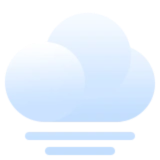Executive Summary
- Swansea University scientists have developed a method to eliminate quantum noise, specifically backaction, using a hemispherical mirror.
- The technique involves trapping particles in a standing wave created by laser light reflected off the mirror, effectively canceling out random fluctuations.
- This breakthrough could lead to the development of more sensitive quantum sensors and a deeper understanding of quantum mechanics.
Event Overview
Quantum noise, which arises from disturbances during measurements of subatomic particles, poses a significant challenge in quantum experiments. Researchers at Swansea University have addressed this issue by employing a hemispherical mirror to cancel quantum backaction. This innovative approach involves trapping particles with laser light in a standing wave, leading to a state where measurement becomes impossible and noise disappears. The finding could open new possibilities for quantum experiments and more sensitive measurements.
Media Coverage Comparison
| Source | Key Angle / Focus | Unique Details Mentioned | Tone |
|---|---|---|---|
| Interesting Engineering | Eliminating quantum noise using a hemispherical mirror and levitated optomechanics. | The study uses Fisher Information Flow to measure how much information a detector can extract without disturbing the system. The study has been published in the journal Physical Review Research. | Positive and informative, highlighting the breakthrough and its potential implications. |
Key Details & Data Points
- What: Elimination of quantum noise (backaction) in quantum experiments using a hemispherical mirror and laser light.
- Who: Researchers from Swansea University, led by Rafal Gajewski and James Bateman.
- When: Study published in Physical Review Research (article updated May 04, 2025).
- Where: Swansea University, Wales.
Key Statistics:
- Key statistic 1: Quantum backaction has been a major obstacle to building useful quantum computers and sensors.
- Key statistic 2: The standing-wave trapping field is necessary for backaction suppression in three dimensions.
- Key statistic 3: The new method satisfies the Heisenberg limit of detection.
Analysis & Context
The Swansea University research presents a significant advancement in the field of quantum mechanics. By utilizing a relatively simple mirror setup, the team has demonstrated a method to effectively eliminate quantum noise, which has long been a limiting factor in quantum experiments. The use of levitated optomechanics and the Fisher Information Flow provides a rigorous framework for understanding and quantifying the noise reduction. This breakthrough has the potential to pave the way for more precise quantum sensors and a deeper understanding of the fundamental relationship between measurement and disturbance in quantum systems. The fact that measurement becomes impossible when disturbance (noise) disappears highlights the link between measurement and noise.
Notable Quotes
We found that under specific conditions, the particle becomes identical to its mirror image. When this happens, you can’t extract position information from the scattered light, and at the same time, the quantum backaction vanishes.
This work reveals something fundamental about the relationship between information and disturbance in quantum mechanics. This opens up new possibilities for quantum experiments and potentially more sensitive measurements.
Conclusion
The Swansea University study offers a promising solution to the persistent problem of quantum noise. By employing a hemispherical mirror and carefully manipulating laser light, the researchers have demonstrated the ability to eliminate backaction, opening doors for more precise quantum measurements. While the immediate impact is on the development of more sensitive quantum sensors, the long-term implications extend to a better understanding of the fundamental principles governing quantum mechanics and the relationship between measurement and disturbance. Future research will likely focus on refining this technique and exploring its applications in various quantum technologies.
Disclaimer: This article was generated by an AI system that synthesizes information from multiple news sources. While efforts are made to ensure accuracy and objectivity, reporting nuances, potential biases, or errors from original sources may be reflected. The information presented here is for informational purposes and should be verified with primary sources, especially for critical decisions.








